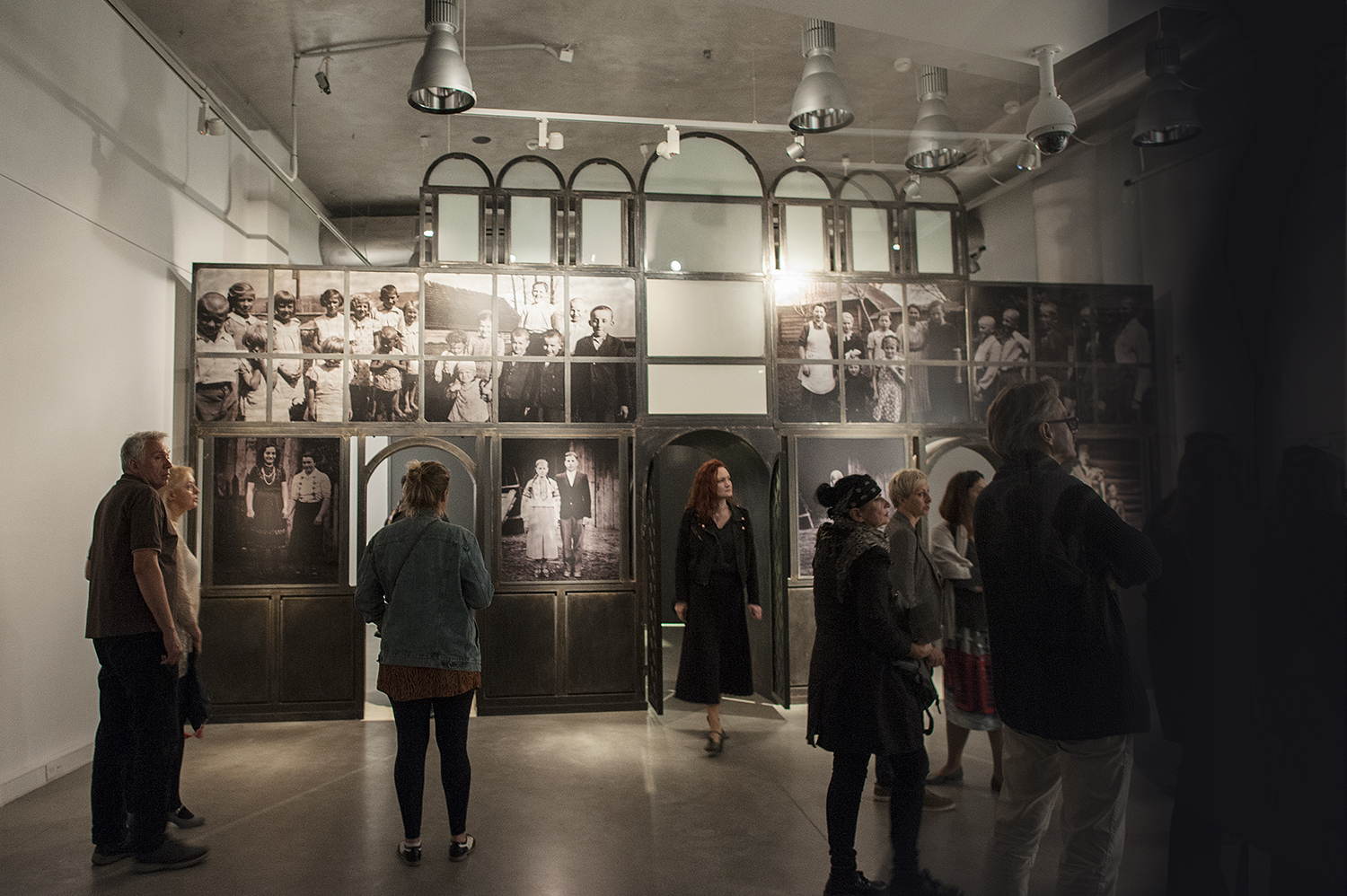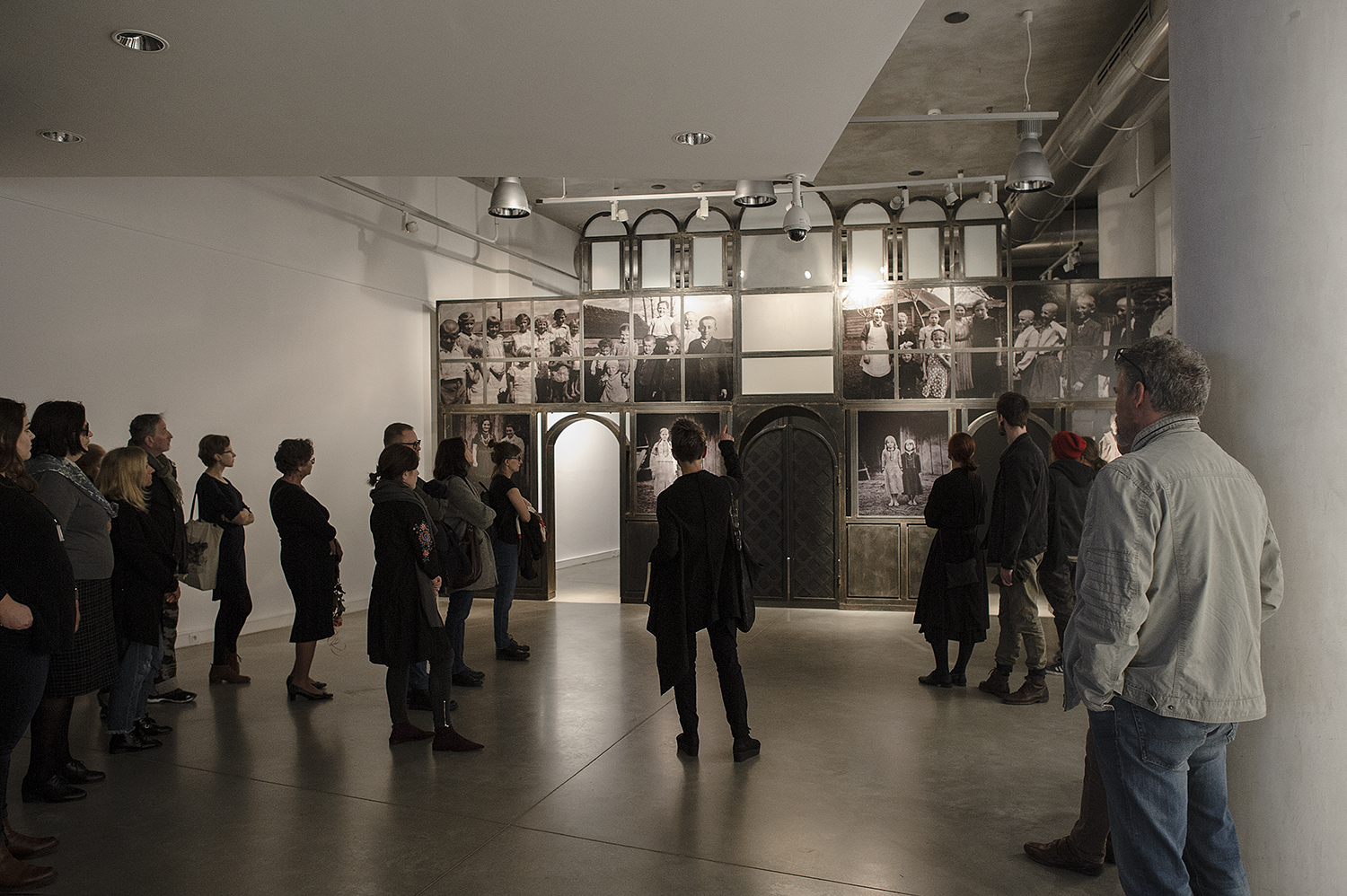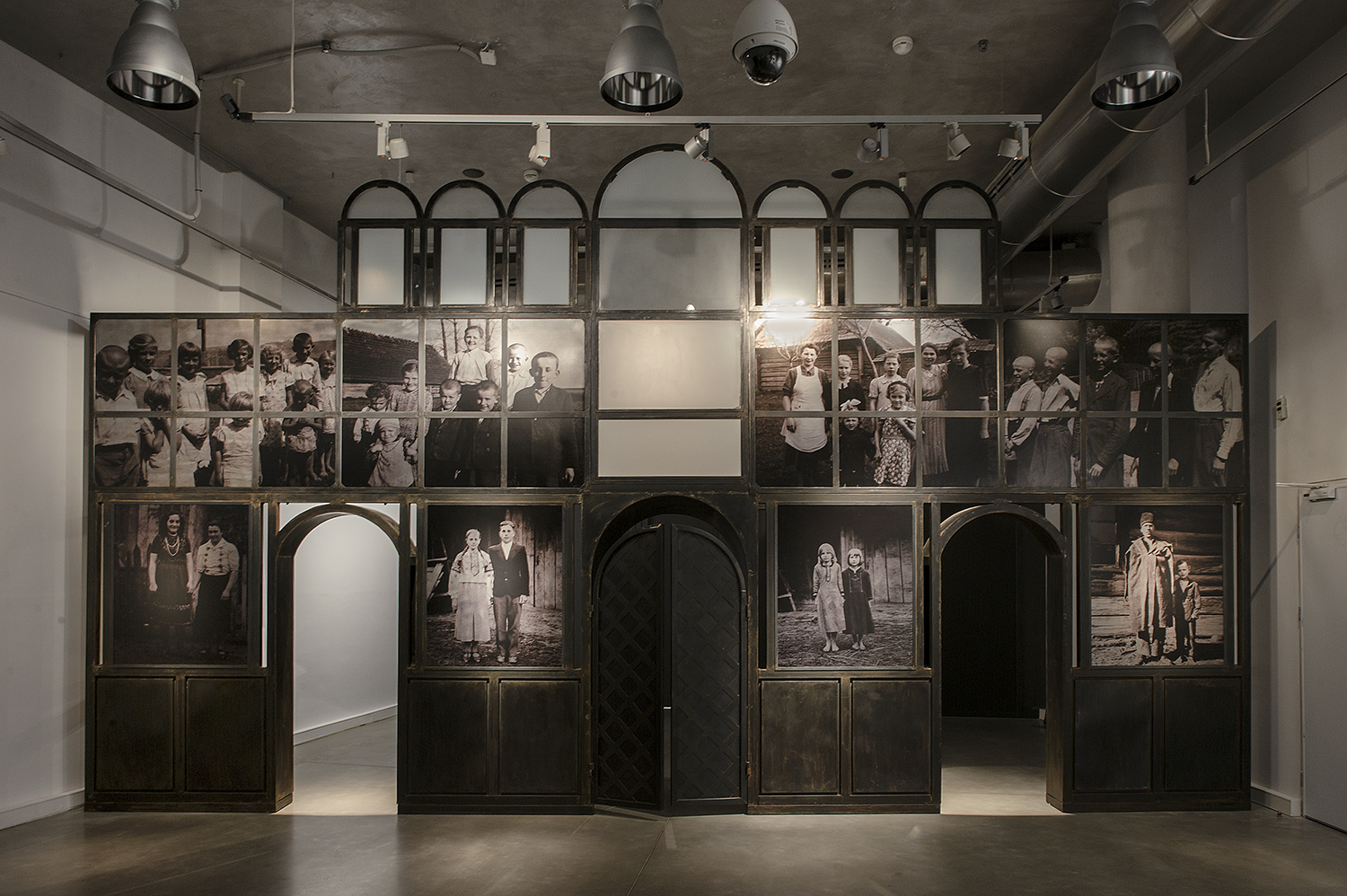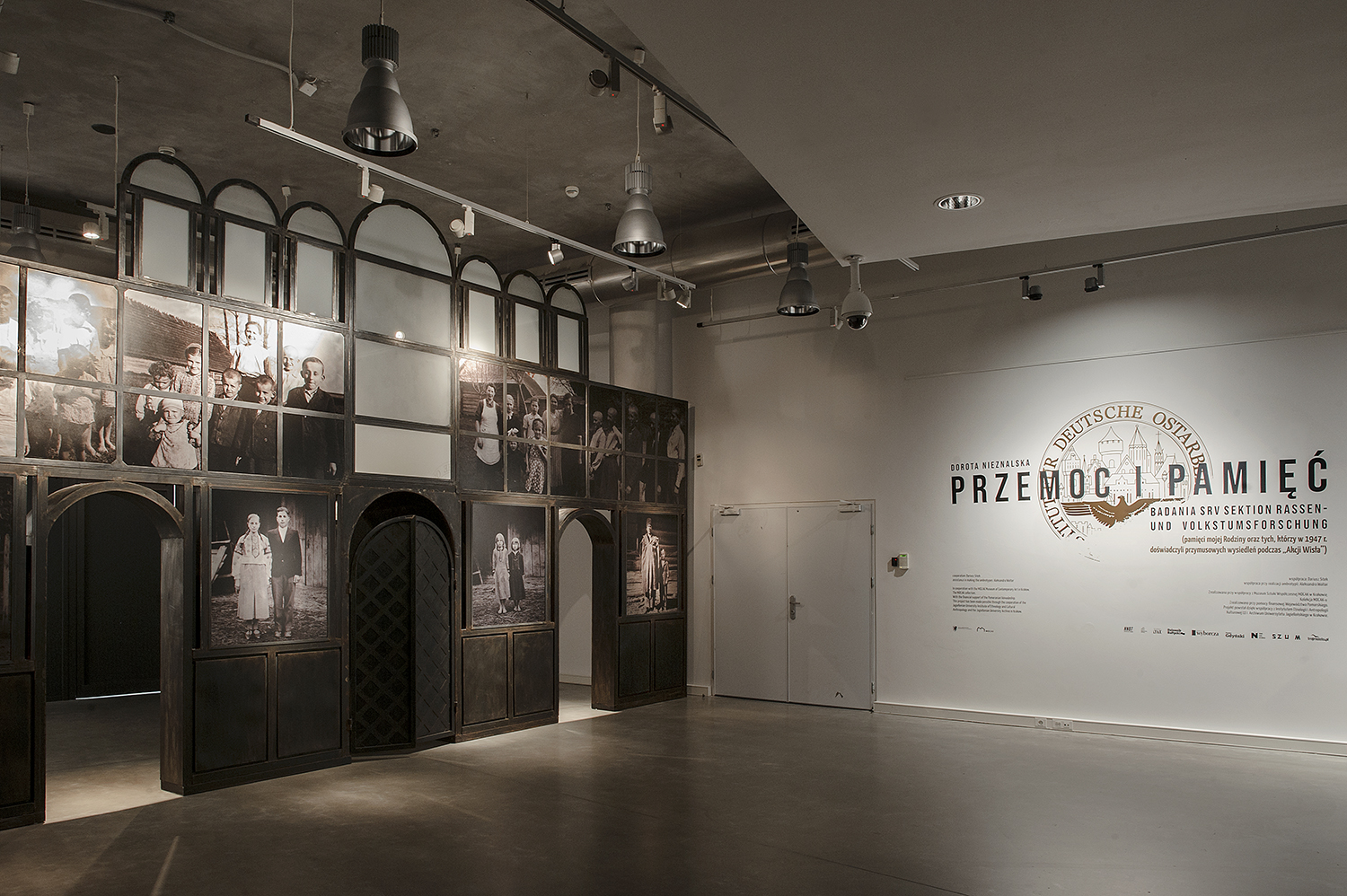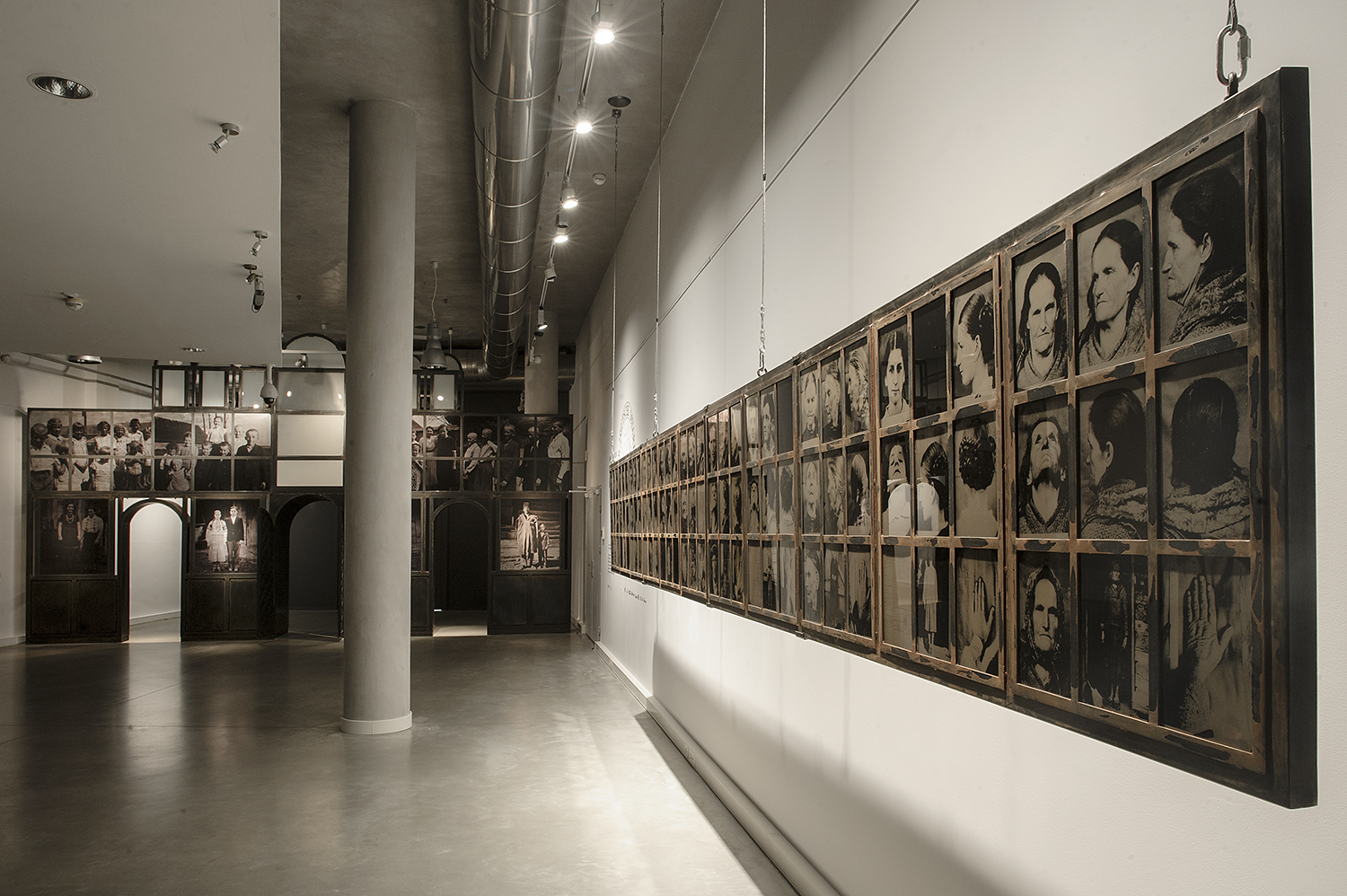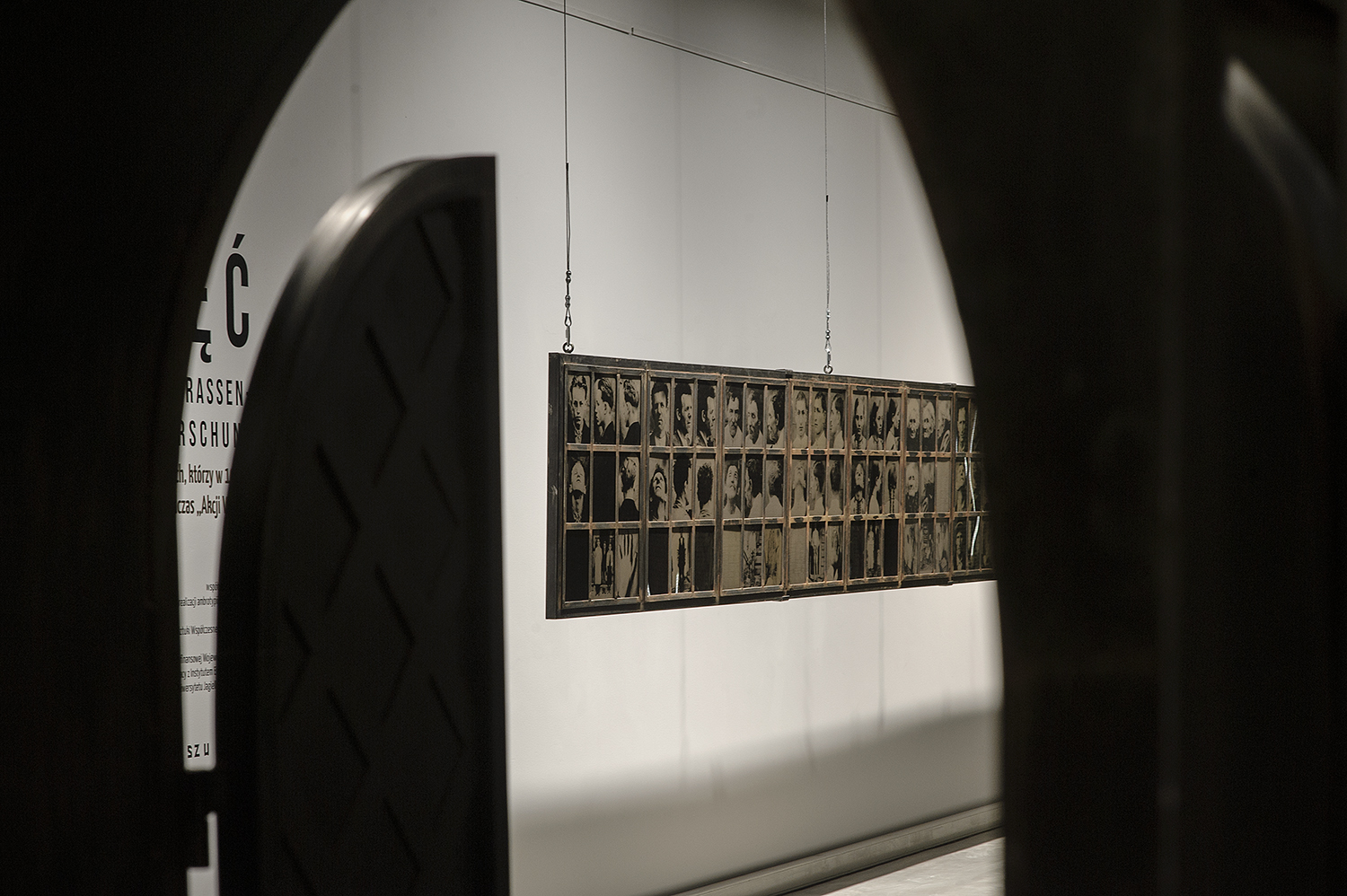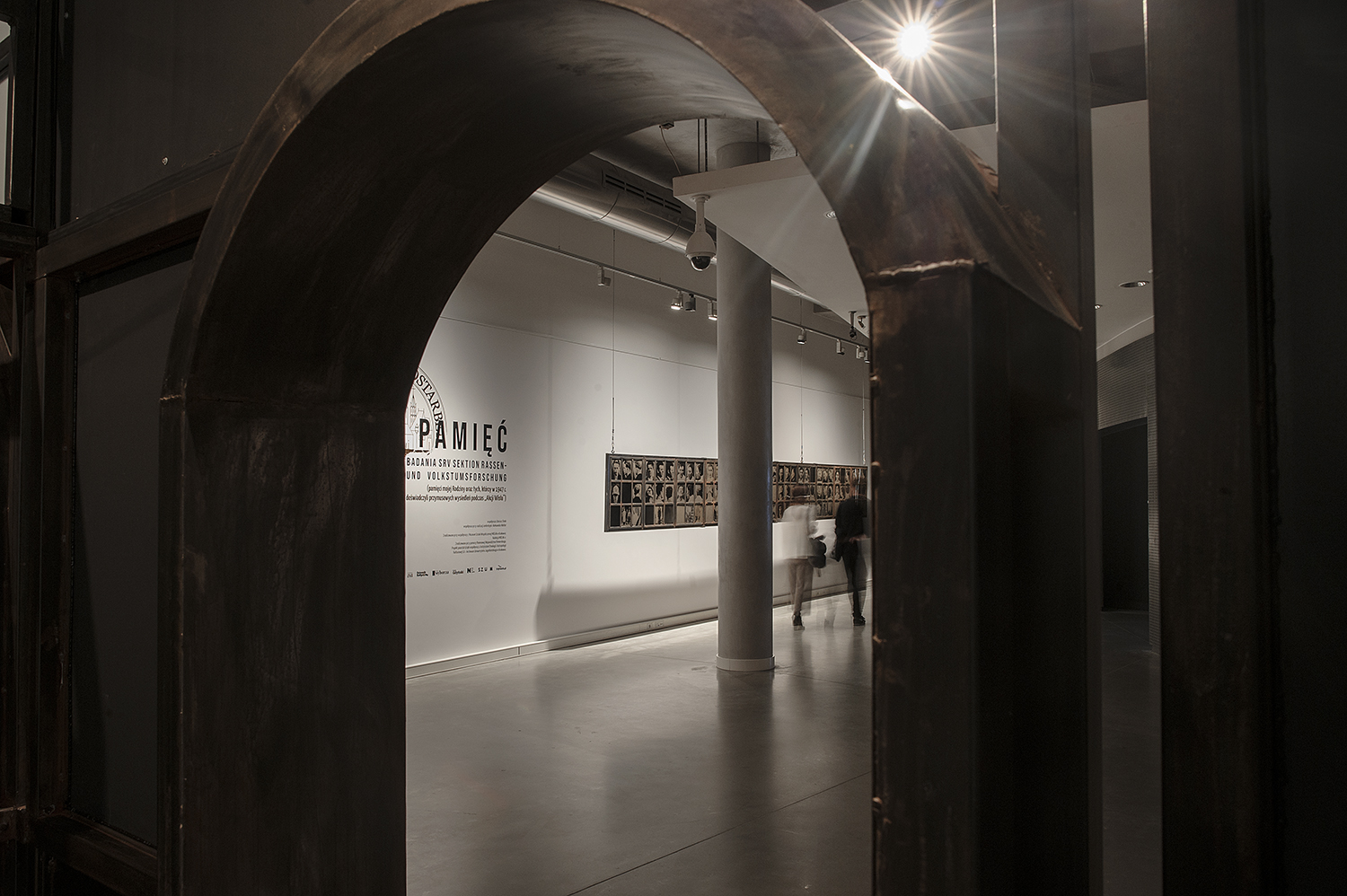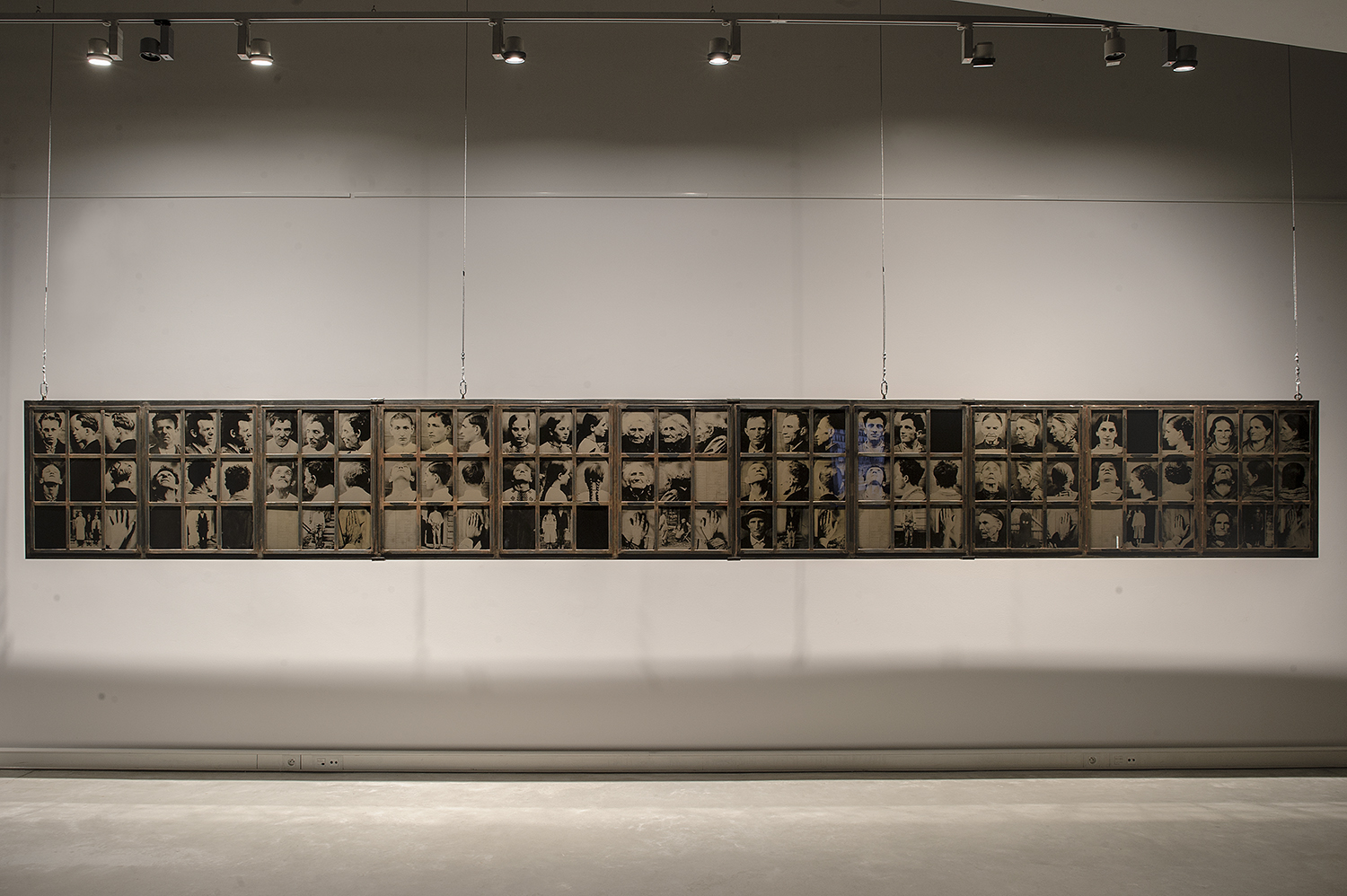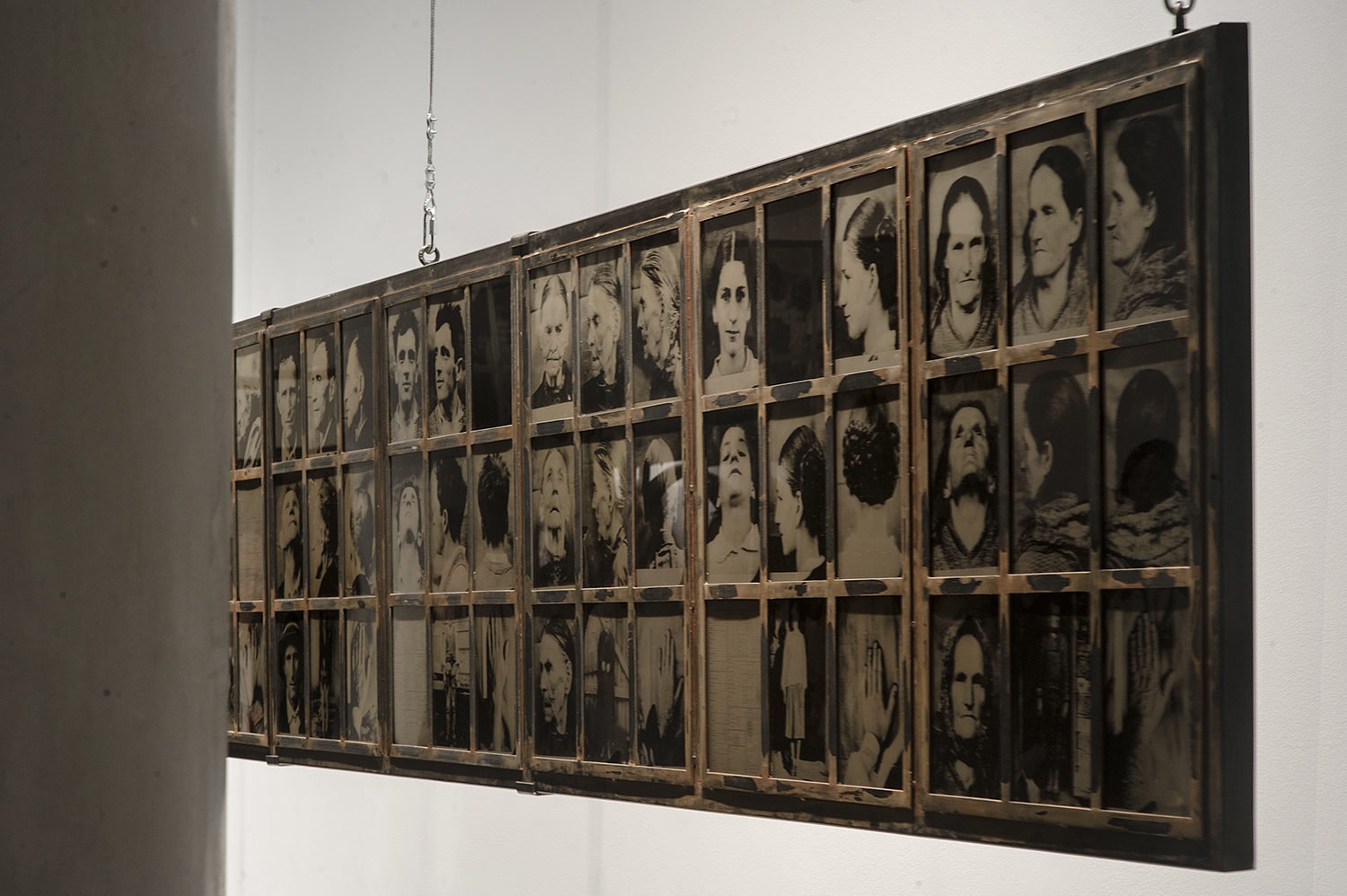Research of SRV Sektion Rassen- und Volkstumsforschung
| title: |
Research of SRV Sektion Rassen- und Volkstumsforschung |
| year: | 2018 |
| dimensions: | 758/433/100 cm, 672/83/5 cm |
| technique: | installation, steel, ambrotype, glass |
| description: |
(in memory of my family, and those who experienced forced resettlement in 1947 during “Operation Vistula”) cooperation: Dariusz Sitek assistance in making the ambrotypes: Aleksandra Wolter In cooperation with the MOCAK Museum of Contemporary Art in Krakow. The MOCAK collection. With the financial support of the Pomeranian Voivodeship. This project has been made possible through the cooperation of the Jagiellonian University Institute of Ethnology and Cultural Anthropology and the Jagiellonian University Archive in Krakow. The main aim of the installation, featuring some remarkable materials created during World War II and presently found in the Jagiellonian University’s Institute of Ethnology and Cultural Anthropology and the Jagiellonian University Archive, is an attempt to critically appraise their equivocal “scientific” value, in part to remember the cultural heritage of the regions explored at the time. The archival photographic materials come from the racial ethnology and reconnaissance section of the Institut für Deutsche Ostarbeit(IDO). According to the intentions of Hans Frank (Governor General GG), the institute was to be transformed into a German university in Krakow. These photographs were meant to display the natural virtues of the General Government and the cultural backwardness of the conquered lands of Poland, to prove the Germans had been eternally present in the “East,” explained as “the Germans spreading civilization.” This project also reflects upon the use of anthropological and ethnographic methods and art history by National Socialism, showing how science was entangled with totalitarianism, and the ambiguous status of neutral and seemingly innocent reconnaissance and ethnographic photographs. The photographs depicting Lemko, Polish, Ukrainian, and Goral peoples are not so very different from traditional reconnaissance and ethnographic photography documents. Obviously, all the activities involved in studying peoples in the lands occupied during World War II, such as photographs of faces and various body parts, medical interviews, and psychological, sociological, and anthropological questionnaires, were obligatory, and participation was ensured by force. The installation is composed of a large, steel construction, symbolically alluding to the form of the Subcarpathian iconostasis. The piece has a symmetrical frame, containing digital copies of archives printed on steel plate. The photographs have been selected from the IDO racial ethnology and reconnaissance section. The form of the iconostasis makes reference to the culture, customs, and Greek-Catholic religion of the populace: Ruski Gorals, Lemkos, and Ukrainians. In place of the holy images, apostles, and prophets, we find images of village folk. This gesture of shifting or altering the hierarchy aims to commemorate and turn attention to social groups who, in the wake of the military operations and ethnic cleansings of 1947, known as “Operation Vistula,” were displaced from Roztocze, Pogórze Przemyskie, Bieszczady, and Lower Beskids. With this, the cultural heritage of these regions was irreparably destroyed. Additional information: What Is or Was the IDO Institut für Deutsche Ostarbeit: Founded in Krakow, this German institution with academic ambitions was created during World War II, after the closure of the Jagiellonian University. The Nazis were carrying out their plan to exterminate the intellectual elite of the conquered nation. On 20 April 1940 – Adolf Hitler’s birthday – the Institut für Deutsche Ostarbeit was established by the command of Hans Frank, head of the General Government. Frank appointed himself the Chair, and made the director Wilhelm Coblitz. The institute was installed in the Jagiellonian buildings, with branches created in Warsaw and Lwów [presently Lvov, Ukraine]; others were planned. IDO was divided into eleven sections, exploring a multitude of issues. It was conceived as a branch of a future German university, like the one created in Poznań (Reichsuniversitat Posen). Employees of German Eastern Studies and academic centers in Berlin, Königsberg, Wrocław, and Vienna contributed to its organization. Its publications spread propaganda (primarily through their periodical, Die Burg) justifying Germany’s aggression on Polish lands, and evoking the theory of Germany’s cultural mission throughout history in Eastern Europe. Several departments, mainly the racial ethnological section headed by Austrian anthropologists, embarked on field trips. Their destinations included the ghetto in Tarnów, Podhale, the Sądecki region, and Lemko villages. Some IDO projects and analyses involved goals that the German authorities wanted to achieve in Central and Eastern Europe after the war. These were both economic and ethnic: the separation of ethnic groups and the segregation of conquered peoples. The German organizers of IDO used the same methods in creating Einsatzstab Reichsminister Rosenberg, situated in the old headquarters of the Jewish Academic Institute (Jidiszer Wisnszaftlecher Institut, YIVO) in Wilno [presently Vilnius, Lithuania] – local experts were employed as lower assistants, and were indispensable in compensating for the imported Reich workers’ shortcomings in language and knowledge. In mid 1944, when news of German military catastrophes were coming in from the front lines, Director Coblitz ordered the evacuation of the IDO collections. They were hidden in two Bavarian castles: Zandt and Miltach. What remained of IDO in Polish territory after the war (the “old IDO” and other piecemeal, scattered, or stolen materials) eventually joined the collections of several Polish archive institutions: the Jagiellonian University Archive, the State Archive in Krakow, the Head Commission for Investigating Nazi Crimesin Poland (presently the Institute of National Memory) and the Archive of New Acts in Warsaw. When Bavaria was taken by the American army, the IDO collections were transported to the USA under the care of the War Department. In February 1947, the institution that was storing the crates – the Medical Intelligence Section of the United States’ Surgeon General’s Office – passed on seven of them to the Smithsonian Institution in Washington. Two or three crates containing the personal files of IDO workers were later withdrawn and deposited in the storage houses of the Alexandria military fort. It seems they were next under the jurisdiction of America’s central archive, the National Archives and Records Administration (NARA). In 1951, the IDO documents that were deposited at the NARA were handed over to the German Federal Republic, at its government’s request, along with other Reich archivalia, after being committed to microfiche. In Germany, part of the IDO collection was deposited at the Bundesarchiv in Koblenz, and then, in 1996 it was taken to the new headquarters in Berlin, where it is stored under number R 521V (Institut für Deutsche Ostarbeit). In the Berlin Bundesarchiv there is also an important group of documents concerning the IDO: Bericht über den Aufbau und die Forschungsaufgaben des Institut für Deutsche Ostarbeit iIn Zandt und Miltach vom 3. Februar 1945 (R 52II, Kanzlei des Generalgouverneurs complex, File 173). On 22 January 2008, the Polish Embassy in Washington ceremonially transferred theSektion Rassen- und Volkstumsforschung collection in the framework of Institut für Deutsche Ostarbeit (IDO) to the Jagiellonian University via the heads of the Smithsonian Institution. The Krakow school was represented by Prof. Karol Musioł, and theJagiellonian University Archive by Director Dr. Krzysztof Stopka. Until that time, the archive had been stored at the National Museum of Natural History (Smithsonian Institution) in Washington. Following an agreement signed on 14 July 2006, between theJagiellonian University and NMNH, the collections were conserved and digitized. TheJagiellonian University and the US Holocaust Museum in Washington covered the costs of the endeavor. |
© Dorota Nieznalska 2009-2023 | privacy policy
website implementation: Brandrei.com
